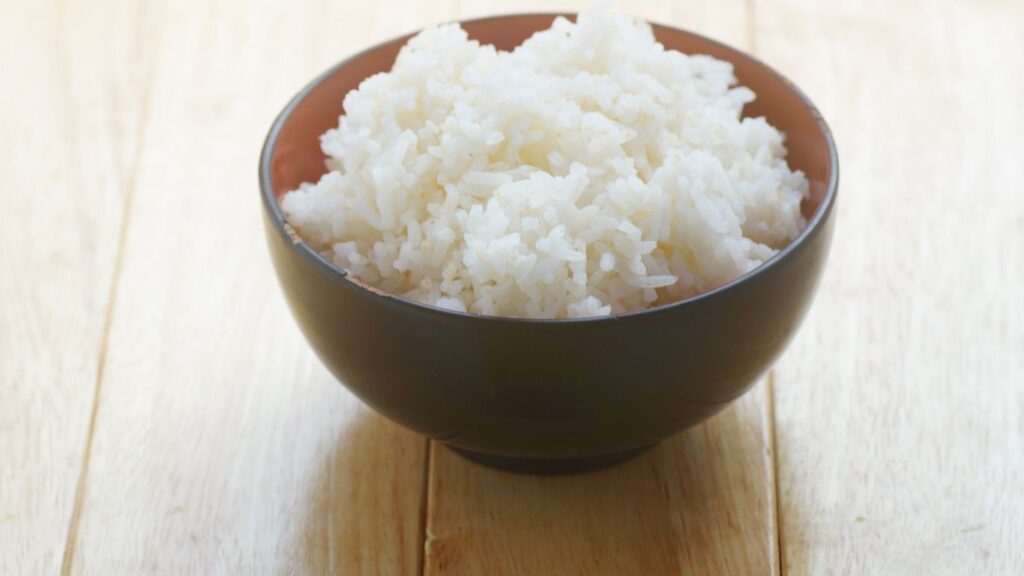The Rice Diet, once a cornerstone of clinical weight management, offers a unique approach to weight loss, centering around low-fat, low-sodium, and high-complex carbohydrate intake primarily from rice. Conceived by Dr. Walter Kempner in the late 1930s at Duke University, its initial aim was to tackle hypertension and chronic kidney disease. However, its simplicity and the promise of substantial weight loss have propelled it into the spotlight, garnering both acclaim and skepticism. Amidst its resurgence, the Rice Diet’s binary reception weaves a tale of nutritional breakthroughs contrasted with debates over its dietary sufficiency and long-term sustainability.
This blog endeavors to peel back the layers of the Rice Diet, scrutinizing its weight loss efficacy through the lens of scientific scrutiny and expert analysis. Our journey will navigate the sea of evidence and counter-evidence, aiming to furnish readers with a balanced view that transcends anecdotal success stories, positioning science and professional insights at the heart of the discourse.
The Rice Diet: Fact or Fiction for Weight Loss
- History and Overview of the Rice Diet
- How the Rice Diet Claims to Work for Weight Loss
- Scientific Evidence Supporting the Rice Diet
- Criticisms and Concerns
- Fact or Fiction: Analyzing the Myths
- Practical Guide to Following the Rice Diet
- Step-by-Step Guide on Starting the Rice Diet
- Tips for Meal Planning and Preparation
- Incorporating Variety to Ensure Nutritional Balance
- Conclusion
History and Overview of the Rice Diet
The Rice Diet, conceived by Dr. Walter Kempner at Duke University in the late 1930s, was originally developed as a treatment for hypertension and kidney disease. Kempner’s pioneering approach emphasized the consumption of rice, fruit, and vegetables, aiming to improve health through dietary means. This diet restricts fat, sodium, and protein, relying instead on high-complex carbohydrates to fuel the body.
Its foundation rests on three pivotal phases: detox, weight loss, and maintenance. The detox phase introduces the diet’s core principles, focusing on rice, fruits, and vegetables to cleanse the body. The weight loss phase gradually integrates additional protein sources, aiming for sustainable weight reduction. Lastly, the maintenance phase broadens food variety while maintaining the diet’s low-fat, low-sodium ethos, ensuring long-term health benefits. Excluded are processed foods, high-salt items, and unhealthy fats, steering participants towards a healthier lifestyle rooted in simplicity and nutritional balance.
How the Rice Diet Claims to Work for Weight Loss
The Rice Diet operates on a mechanism that integrates a low-fat, low-sodium, and high-complex carbohydrate regimen, fundamentally altering the body’s metabolic dynamics. By significantly reducing the intake of fats and sodium, it aims to minimize water retention and lower blood pressure, while the high intake of complex carbohydrates from rice, fruits, and vegetables ensures a steady supply of energy and promotes satiety with fewer calories. This composition is pivotal in initiating weight loss, as it encourages the body to utilize stored fats for energy, leading to a reduction in body weight.
Calorie restriction plays a central role in the diet’s effectiveness for weight loss. By limiting daily calorie intake, the Rice Diet creates a caloric deficit, compelling the body to draw from its fat reserves to meet energy demands, thus facilitating weight loss. This principle aligns with the fundamental equation of weight management: consuming fewer calories than the body expends.

Moreover, the diet’s impact on metabolism and digestion is significant. High-complex carbohydrates are digested more slowly, leading to a gradual release of glucose into the bloodstream. This steady energy release helps maintain balanced blood sugar levels, reduces hunger pangs, and enhances metabolic efficiency. Additionally, the fiber-rich components of the diet aid in digestion and promote gut health, further supporting weight management and overall wellness.
Scientific Evidence Supporting the Rice Diet
Research on the Rice Diet has highlighted its potential for significant weight loss and improvements in cardiovascular health. Studies, notably those originating from its inception at Duke University, have documented its efficacy in lowering blood pressure, reducing cholesterol levels, and facilitating weight loss. These findings underscore the diet’s value as a therapeutic dietary intervention, especially for conditions exacerbated by dietary excesses such as hypertension and obesity.
Comparatively, the Rice Diet presents a unique contrast to other weight loss diets, particularly those emphasizing high protein and low carbohydrates, such as the Keto and Atkins diets. Unlike these diets, which focus on rapid weight loss through ketosis, the Rice Diet promotes a gradual, sustainable weight loss strategy through calorie restriction and a focus on complex carbohydrates. This approach offers a distinct advantage in terms of cardiovascular health and sustainability over time.
Testimonials and case studies from individuals who have followed the Rice Diet reveal a range of success stories, from dramatic weight loss achievements to substantial improvements in health markers like blood pressure and blood sugar levels. These real-life accounts not only affirm the diet’s potential benefits but also highlight its adaptability to individual needs and lifestyles, providing a testament to its effectiveness and impact on overall well-being.
Criticisms and Concerns
The Rice Diet, while effective for weight loss and certain health improvements, raises concerns regarding nutritional deficiencies and potential health risks. Critics argue that the diet’s strict limitations on protein, fats, and sodium might lead to deficiencies in essential nutrients, such as vitamins B12 and D, iron, calcium, and omega-3 fatty acids. These nutrients are crucial for bone health, immune function, and neurological well-being. Additionally, the low protein intake may not support adequate muscle maintenance, especially important for aging populations.
Sustainability is another challenge for the Rice Diet. Its restrictive nature and the monotony of food choices can make long-term adherence difficult for many individuals. The diet’s emphasis on low-fat and low-sodium foods might also not be suitable for everyone, particularly those with specific health conditions or high physical activity levels.
Nutrition experts offer counterarguments, emphasizing the importance of a balanced diet that includes a variety of food groups to meet all nutritional needs. They advocate for diets that are flexible and sustainable, highlighting that extreme restrictions can lead to disordered eating patterns and may not be feasible as a lifelong dietary approach. Experts suggest that while the Rice Diet can be an effective short-term solution for weight loss, individuals should aim for a balanced diet for long-term health and well-being.

Fact or Fiction: Analyzing the Myths
The Rice Diet has been shrouded in myths and misconceptions, particularly around its core component—rice—and its impact on weight gain. A common myth suggests that high carbohydrate intake, especially from rice, leads to weight gain. However, the Rice Diet debunks this by promoting weight loss through a diet high in complex carbohydrates. The distinction lies in the type of carbohydrates consumed; complex carbohydrates found in whole grains, like brown rice, are digested slowly, providing steady energy and aiding in satiety, which can prevent overeating.
Another misconception is that all carbohydrates are bad. The Rice Diet emphasizes the importance of whole grains over refined grains in weight management. Whole grains retain the bran and germ, offering more fiber, vitamins, and minerals than refined grains, which have been stripped of these nutritious components. This higher fiber content not only aids digestion but also plays a crucial role in maintaining stable blood sugar levels, reducing the risk of insulin spikes and subsequent fat storage.
Clarifying these misconceptions highlights the Rice Diet’s approach to using high-quality, complex carbohydrates as part of a balanced diet to support weight loss and overall health. It underscores the fact that not all carbohydrates are created equal, and their impact on weight management depends significantly on the type and quality of the carbohydrate consumed.
Practical Guide to Following the Rice Diet
Step-by-Step Guide on Starting the Rice Diet
- Understand the Basics: Familiarize yourself with the diet’s principles – low-fat, low-sodium, high-complex carbohydrates, focusing on rice, fruits, and vegetables.
- Phase Planning: Begin with the detox phase for the first week, focusing on rice, fruits, and vegetables only. Progress to the weight loss phase by incorporating lean proteins. Transition to the maintenance phase for long-term dietary habits.
- Grocery Shopping: Stock up on brown rice, fresh fruits, vegetables, and sources of lean protein like beans, fish, and poultry. Avoid processed foods, high-sodium snacks, and fatty meats.
- Meal Scheduling: Plan to have three meals a day at regular intervals to maintain energy levels and prevent hunger pangs.
Tips for Meal Planning and Preparation
- Batch Cooking: Cook rice in large quantities to save time. Use it as a base for various meals throughout the week.
- Vegetable Variety: Experiment with different vegetables to keep meals interesting and ensure a wide range of nutrients.
- Protein Rotation: Rotate your protein sources to maintain a balanced diet and keep meals enjoyable.
- Seasoning Without Salt: Use herbs, spices, and salt-free seasoning blends to add flavor without increasing sodium intake.
Incorporating Variety to Ensure Nutritional Balance
- Colorful Plates: Aim for colorful meals with a variety of fruits and vegetables to cover a broad spectrum of vitamins and minerals.
- Whole and Refined Grains: While the focus is on whole grains, occasional inclusion of refined grains can add diversity without compromising the diet’s principles.
- International Cuisines: Explore recipes from different cultures that emphasize rice and vegetables, such as Asian stir-fries or Middle Eastern rice dishes, to keep the diet exciting and varied.
- Flexible Protein Sources: Incorporate plant-based proteins like lentils and chickpeas along with animal proteins to ensure adequate intake of all essential amino acids.

Conclusion
The Rice Diet, once a beacon of dietary management, has sparked debate over its efficacy for weight loss. Originating from Duke University in the late 1930s, this regimen emphasizes low-fat, low-sodium, and high-complex carbohydrate intake, primarily from rice, fruits, and vegetables. Its phased approach—detox, weight loss, and maintenance—aims to cleanse the body and promote sustainable weight loss. While critics argue it may lead to nutritional deficiencies, proponents highlight its success in significant weight reduction and improved cardiovascular health. Despite its controversies, the Rice Diet exemplifies how simple, whole-food-based diets can influence weight management. The key lies in balancing scientific evidence with individual dietary needs, debunking the fiction and uncovering the facts of the Rice Diet’s role in weight loss.
Also read: The Myth of Spot Reduction: Unraveling the Truth About Targeted Fat Loss
